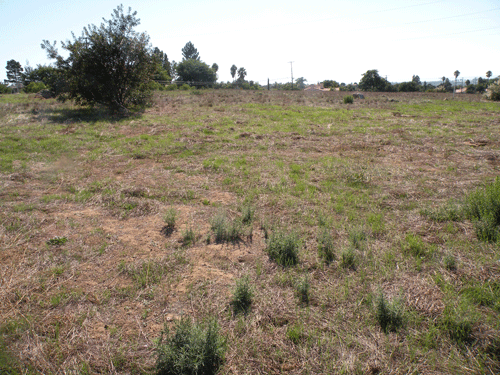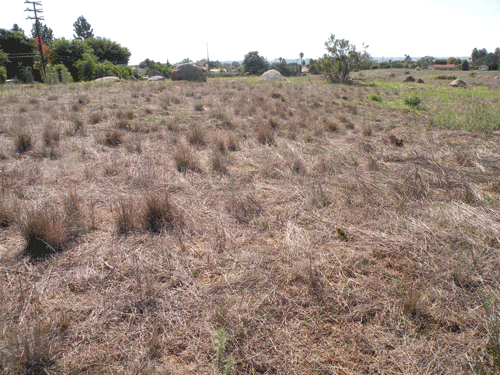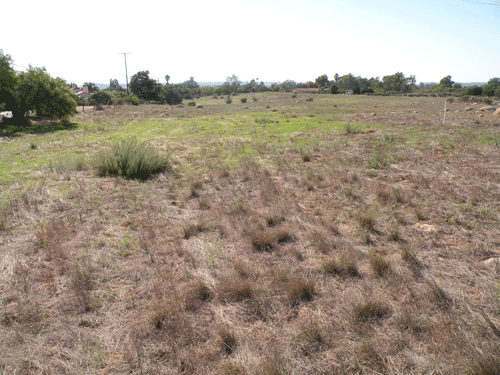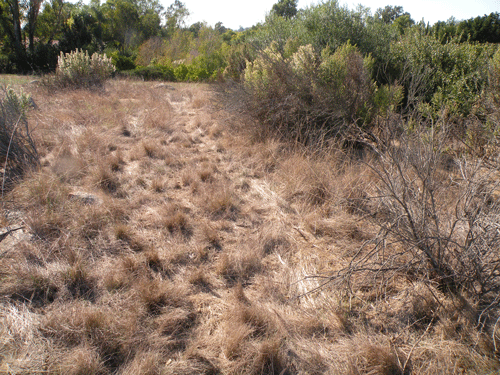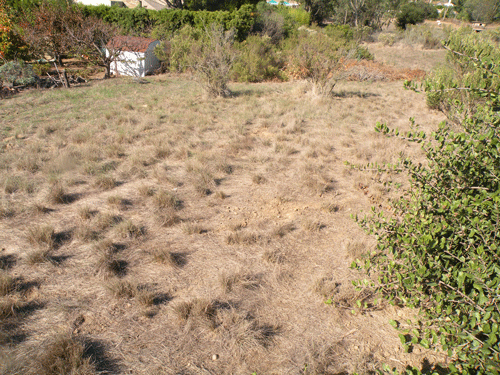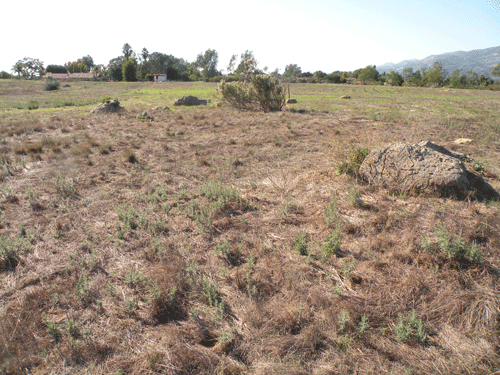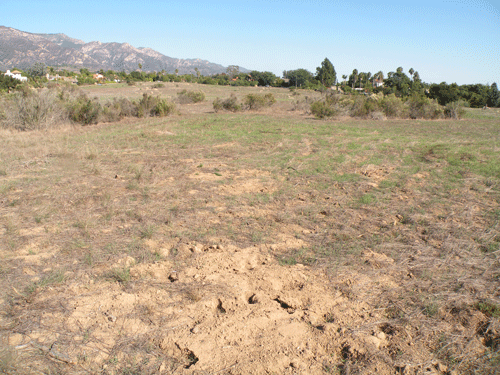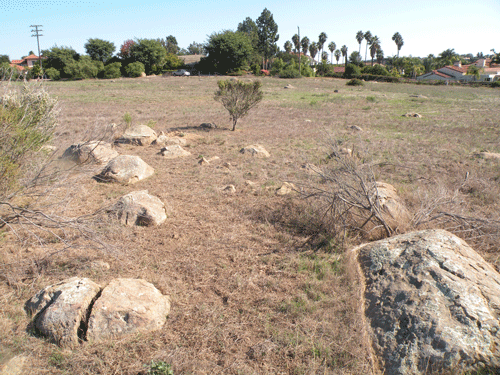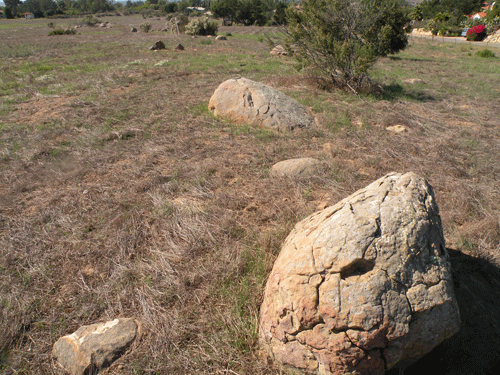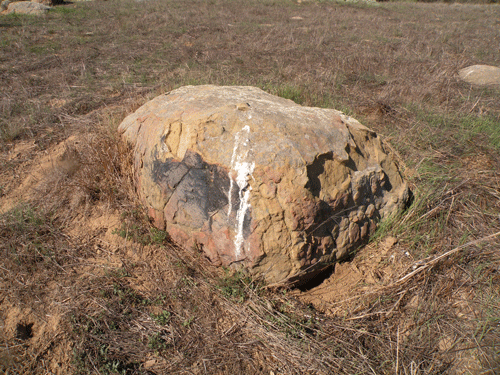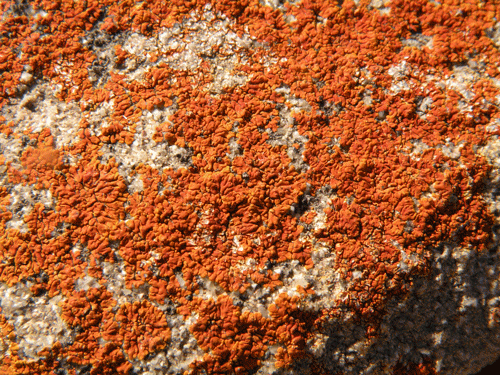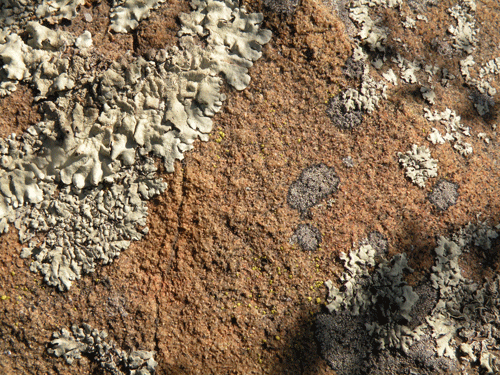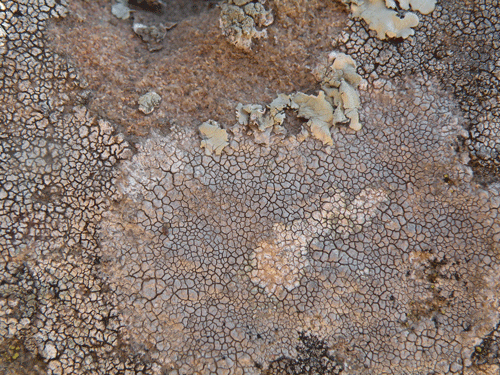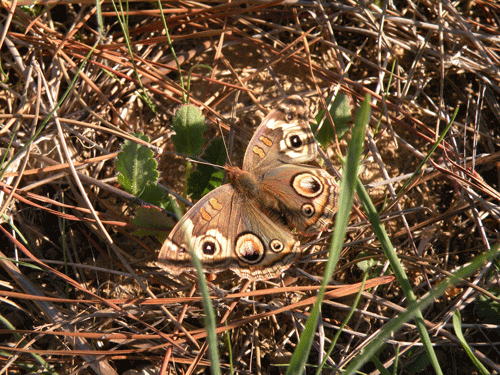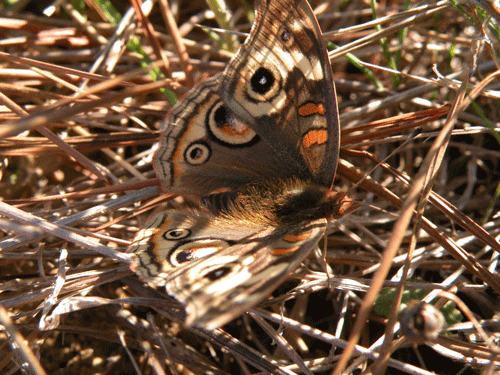Channel Islands Chapter
 Park Hill Estates Development Appeal and Lawsuit
Park Hill Estates Development Appeal and Lawsuit
Park Hill Estates Development
Jeff Nelson, The Oak Creek Company, is trying to increase the density of a small upscale housing development in the Goleta Valley area of Santa Barbara County, for a project that was previously approved for 12 houses, with mitigation for impacts to native grassland vegetation occurring onsite. In 2009, Mr. Nelson applied for an amendment to that development to increase the number of houses to be built, resulting in no room for any onsite mitigation, moving that to UCSB property east of Coal Oil Point. A draft Mitigated Negative Declaration (MND) was prepared, then revised after comments submitted by and on behalf of the San Antonio Creek Neighborhood Association (neighbors surrounding the development site) and CNPS. David Magney Environmental Consulting was retained by the association to critically review the MND and supporting biology survey reports. After several letters and testimony by Mr. Magney and others, in late 2011, the Santa Barbara County Planning Commission supported the criticisms and required that an Environmental Impact Report (EIR) should be prepared for the revised project. CNPS submitted a letter of support during the public comment period and Andrea Adams-Morden testified on behalf of CNPS. We got what we wanted, a more thorough assessment of project resources and associated impacts to them.
However, through backroom deals, Mr. Nelson somehow convinced County staff and the Planning Commission that slight revisions (slight reduction of the number of houses proposed) was enough to preclude the need for an EIR, and that the inadequate MND would suffice. Needless to say, neighter CNPS or the neighborhood association was too pleased with that significant and strange reversal. We were left with no option but to formally appeal that decision to the Santa Barbara County Board of Supervisors, which was filed on 17 September 2012. Our appeal was heard the morning of Tuesday, 16 October 2012. The Law Office of Marc Chytilo was our legal representative on this appeal. Our points of appeal were submitted on 12 October 2012.
. There are several areas of contention. First, while some biological resources surveys were conducted for the first version of the project back in 1998, they did not follow standard survey methods and protocols, which means the biologists and County cannot say for certain what biological resources are really present onsite, and what would be impacted by the development project. Second, entire groups of species were not even surveyed for, such as lichens, bryophytes, and invertebrates. Botanical and wildlife surveys were only conducted during the early spring of 1998, with the only other surveys conducted subsequently were to map the native perennial grasslands onsite. Interestingly, the amount of needlegrass grassland onsite doubled in area between 1998 and 2010. Did the needlegrass really expand, or was it undermapped the first time? Third, there was never any analysis of the newly proposed offsite mitigation for needlegrass lands at the UCSB site, which is required under CEQA. None of these issues would be addressed except hopefully with the preparation of an EIR. Below is an aerial photograph of the Park Hill Estates development site (taken in 2007), dominated by native grassland vegetation, with areas dominated by Purple Needlegrass (Stipa pulchra), which is considered a sensitive plant community by the County of Santa Barbara and CNPS.
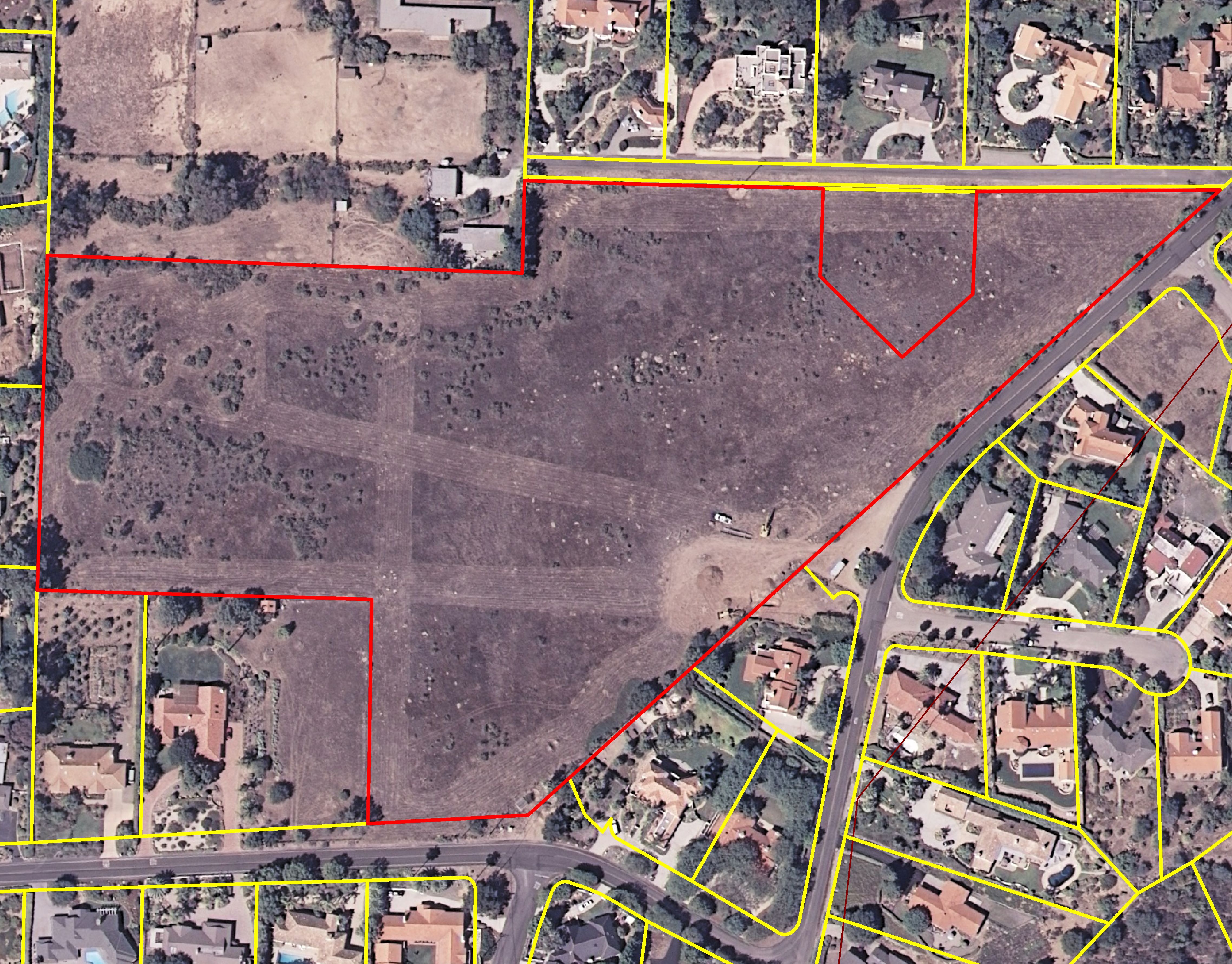
One of the unique aspects of the Park Hill Estates property is that it is an old fanglomerate, fine soils with scattered sandstone boulders covered with lichens. Milpitas soils are rare, with most of it developed already, and this is where we find this unusual and now rare landform. Below is a map of where this soil mapping unit is found, outlined in blue, with the Park Hill Estates development site outlined in red. This landform is very different in many ways from the young coastal terrace found at Coal Oil Point, which is not appropriate for offsite mitigation for habitat on the Milpitas soils. One of the few areas left undeveloped can be found at the Preserve @ San Marcos a couple of miles east of the Park Hill Estates site.
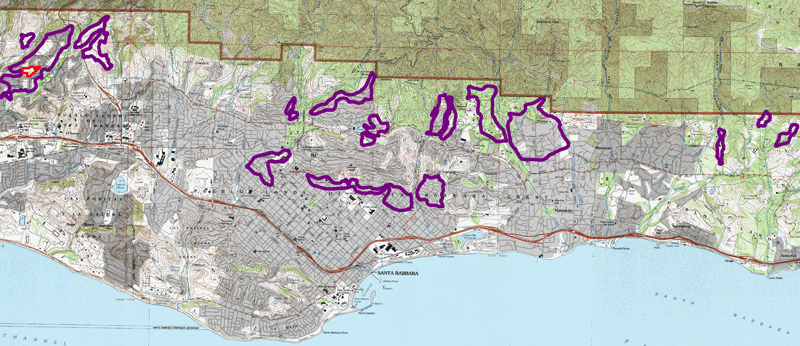
Scenes of the Park Hill Estates Property
The photographs below illustrate the habitats present on the 14.87-acre site as it occurred on 27 October 2011. Click on each one to see a larger version. A brief explanation will appear when hovering over a photograph.
David Magney testified before the Santa Barbara County Board of Supervisors to make our case, again, about the need for an adequate and current assessment of the biological resources present onsite, how the proposed project would impact them, and how significant impacts to them could be mitigated. The appeal hearing was held on the morning of 16 October 2012. Our appeal was denied 3:1, with Supervisor Janet Wolf recusing herself because she lives in the neighborhood.
Santa Barbara County Sued
On 16 November 2012, CNPS filed a legal challenge to the Santa Barbara County Board of Supervisors' ill-advised decision to let the Park Hill Estates development project move forward without the benefit of a full impact assessment with an EIR. Instead, they let the Planning Commission's decision to allow the flawed and inadequate MND stand. For the reasons stated above on our appeal, CNPS was joined by the San Antonio Creek Home Owners Association and the Friends of Saspili (a Chumash Indian organization), to sue the County, and the developer, over this. A copy of the press release can be read here. Environmental attorney, Marc Chytilo, Esq., is representing CNPS and the other plaintiffs. Available here is the legal complaint (lawsuit).
On Sunday afternoon (18 November 2012), David Magney (representing CNPS) and others were interviewed by KEYT 3 News about our concerns about the project and what CNPS hopes to gain from the lawsuit. A local newspaper reporter from the Santa Barbara News Press was also there and interviewed the plaintiffs, writing a good story on the issues. Also present for the cameras was a Red-tailed Hawk and a Great Blue Heron, both who depend on the habitat of the site to forage.
CNPS and the other plaintiffs have been in participating in settlement meetings/talks for the last several months. Unless we reach an agreement, what is discussed in these meetings must be kept confidential and cannot be used in legal moves if we can't come to a agreement. It has been a slow and frustrating process and seemed to fail back in February. However, a court-ordered mediated meeting was recently held, where it looks like we just might settle. We shall see. If we don't settle, CNPS and the other plaintiffs feel we have a strong case against the County (and developer) for failure to comply with CEQA. Stay tuned.
More Information
Get more information from the following documents (PDFs) directly related to this project:
Watershed Environmental's original (1999) botanical survey report
1998 Wildlife Survey Report
DMEC comment letter on Draft May-2011 MND
November 2011 Final MND
County Staff report on Final MND
DMEC comment letter on Revised Draft Nov-2011 MND
DMEC supplemental comments on Draft May-2011 MND
DMEC comment letter on Final MND
UCSB Proposed Mitigation Site document
Magney Planning Commission Testimony - December 2011
CHANNEL ISLANDS CHAPTER, CALIFORNIA NATIVE PLANT SOCIETY, PO Box 6, Ojai, CA 93024-0006
Special thanks to Carlin Moyer for the beautiful illustration of Toyon on this page.
